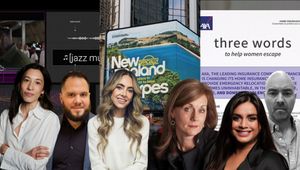
Psembi Kinstan: Nostalgia Can Refresh an Idea, or Be Lazy and Feed Short-Termism. Know The Difference

Whether nostalgia moves us forward or holds us back is a hairy, gnarly and nuanced provocation.
Let’s pull apart the difference between jumping on ‘nostalgia’ that’s lazy, borrowed interest that has little to do with the brand (or just boringly repeating what’s already been done), and ‘nostalgia’ that refreshes ideas or themes that have been part of the brand’s DNA and history.
If there’s one thing that’s eroded clients’ trust in Australian agencies, and therefore hurt the proper bravery within our industry, it’s the industry’s decade or more of dangerous short-termism that’s encouraged by awards festivals.
Passing off all ‘nostalgia’ as the enemy dangerously feeds into this.
Think of the campaigns that chase after a random new shiny thing at the expense of the legacy of the brand. More often than not, it’s a new agency or new creative team, pushing to make their mark without much consideration about the effectiveness of what they’re doing beyond the next Cannes deadline.
Making your mark is a great thing.
Making your mark by blowing up something that’s incredibly powerful is for ego-maniacal morons.
Tapping into a story that’s part of your brand’s DNA, and refreshing it to be relevant for modern context - that’s what advertising is built upon. That’s the foundation of marketing science. (Look at the great Macca’s ‘Original Mouthful’ work or the recent Uber work.)
Making work for brands that feels like that unique brand is fundamental to what we all do. It’s not the lazy kind of nostalgia. Distinctiveness can mean looking the same and talking with the same tone, or to Brent Smart’s well made point, it’s really about feeling the same.
Some in the industry believe brands are shaping culture less than ever. I would argue that brands have as much power as ever, but many agencies are doing a piss-poor job at understanding what tools they should be using to do so.
The tools or media that brands can use are vastly different than two decades ago. As agencies, we have better ways than ever to make great ideas spread effectively.
Especially when there’s less money on the table (again, I’d point to the Telstra campaigns as proof of: when the money allows it, traditional methods remain the most effective).
After years of more media money going to search marketing than any other channel, social is now the dominant channel. That’s a good thing for creative agencies and brands.
And I’d argue, contrary to most discussion and frustrated ranting about social media, social media isn’t hurting agencies’ ability to ‘craft’. Sure, craft looks different now in these channels, but it’s as important as ever, and it’s being rewarded.
If you don’t think social media benefits from spectacular craft, take a look at any global campaign from Louis Vuitton or Heinz, or our local campaigns for Vodka Cruiser’s ‘Hex your Ex’ or Porsche’s ‘Taycan Arcade’.
Craft is more important than ever.
–
That’s why DDB co-developed Meta’s training for Reels that’s available to Meta partners across the globe, so more brands and agencies start to understand the craft they should be applying, and how to build an agency model for it. If you’re interested, reach out to your Meta rep, or directly to me.















